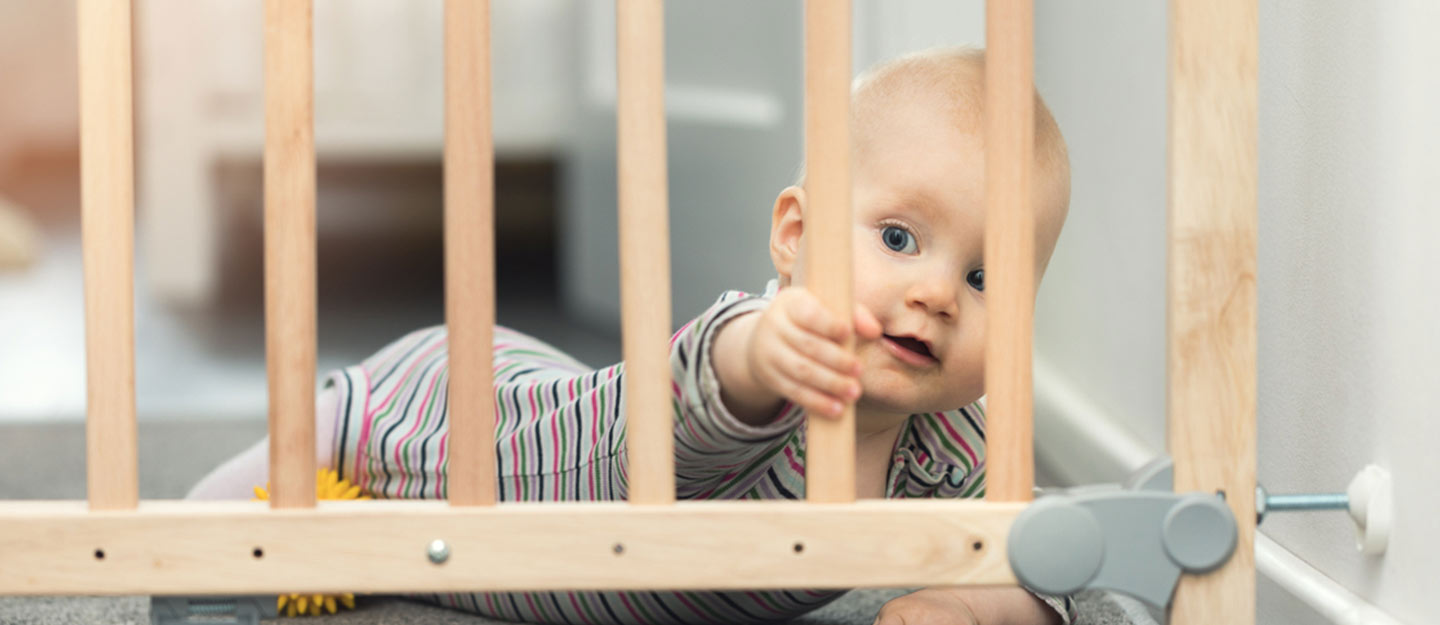When bringing home a new baby, a new viewpoint is also needed to assess your home and ensure that it’s safe for your child.
“Approximately six children in the United States die every day from an injury sustained in the home,” says Jen Ritter, Fire and Life Safety Educator for the Grand Traverse Metro Fire Department. Considering that statistic and the importance of keeping your child safe, you need to ask yourself if your home is really baby-proof. Here’s how to be sure.
“I suggest that parents or caregivers get down and lay on the floor in locations that their child may normally be,” says Ritter. It’s very eye opening.” Look to see what may interest little ones – outlets, cords or objects like paperclips or pencils. We may not give much thought to things on this level, but little ones will.
Ritter suggests looking over the interactive guide on baby-proofing your home, found at safekids.org.
She advises checking to see if your kid’s toys fit through the center of a toilet paper roll. If it does, it’s too small for your infant or toddler, who tend to explore their world though their mouths. Another key point according to Ritter is to make sure your home has working smoke alarms and follows the 1-2-10 Rule: Once a month test your alarms, twice a year change the batteries and every 10 years the alarm needs to be totally replaced (check manufacturer dates on back of device).
For children ages 1-4, drowning is the leading cause of injury-related death in the home. Never leave your child alone in a bath – or anywhere. Vigilance is essential but even the most attentive parent can’t watch a child every moment. That’s why it is so important to have properly installed baby gates, spout covers, and lid locks for toilets.
Other important points:
- Laundry detergent and dishwasher detergent packs should be stored out of reach.
- Medicines and cleaning products should be stored out of sight and out of reach of kids.
- Don’t cook while carrying baby! They can easily reach out and touch hot stovetops and topple pans. Keep hot drinks out of reach too.
- Use the straps and buckles on high chairs, swings and strollers to avoid falling incidents.
- Make sure top-heavy items, like TVs, are secured properly with braces or brackets.
- Use a carbon monoxide alarm, and have one on every level of your home.
- Check your water heater to avoid potential scalding incidents, and set to the manufacturers recommendation, or 120 degrees. Always check baby’s bath water with elbow or wrist.
Lastly, remember that infants should be placed on their backs to sleep, in a crib with a tight fitting mattress cover only. Do not use bumpers or have blankets, soft pillows or stuffed animals in the crib that your child may suffocate in. Learn more about creating a safe sleep environment for your baby.
Taking these steps will keep your mind worry-free as you focus on what’s most important – getting to know and enjoy your new baby.





